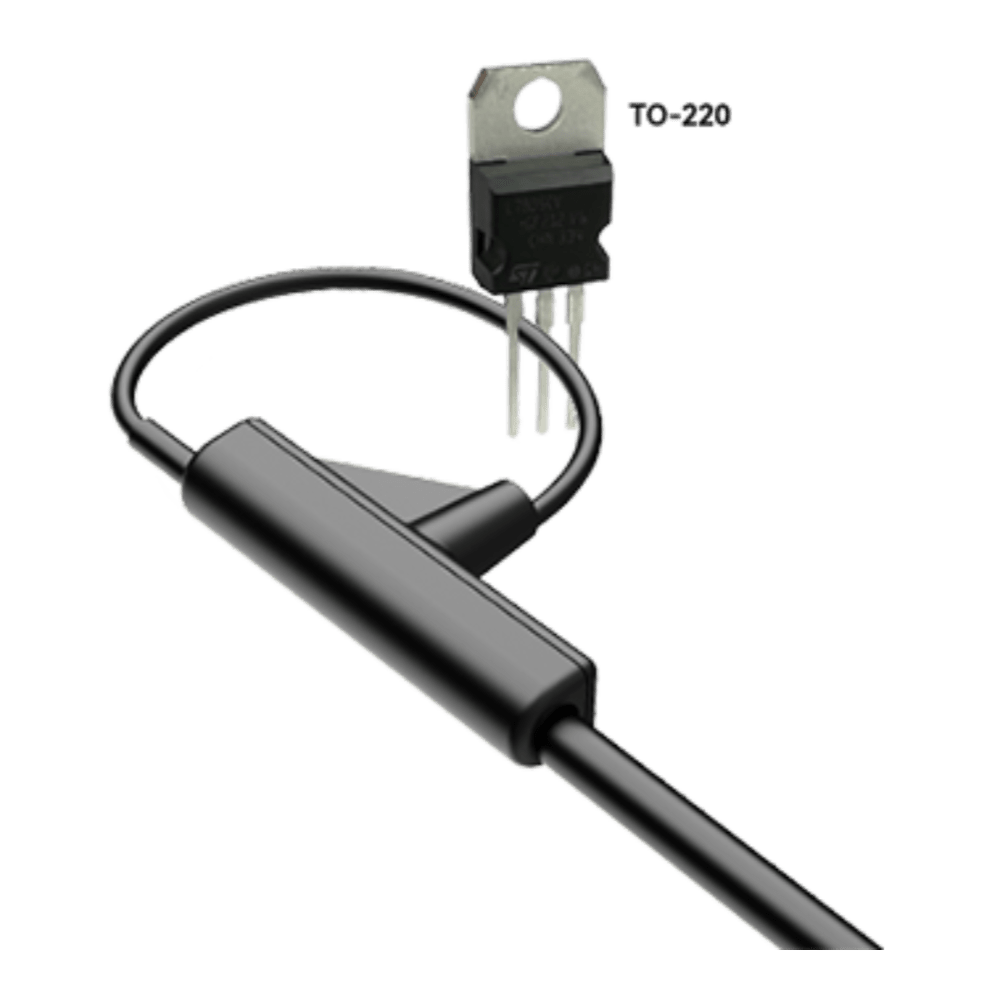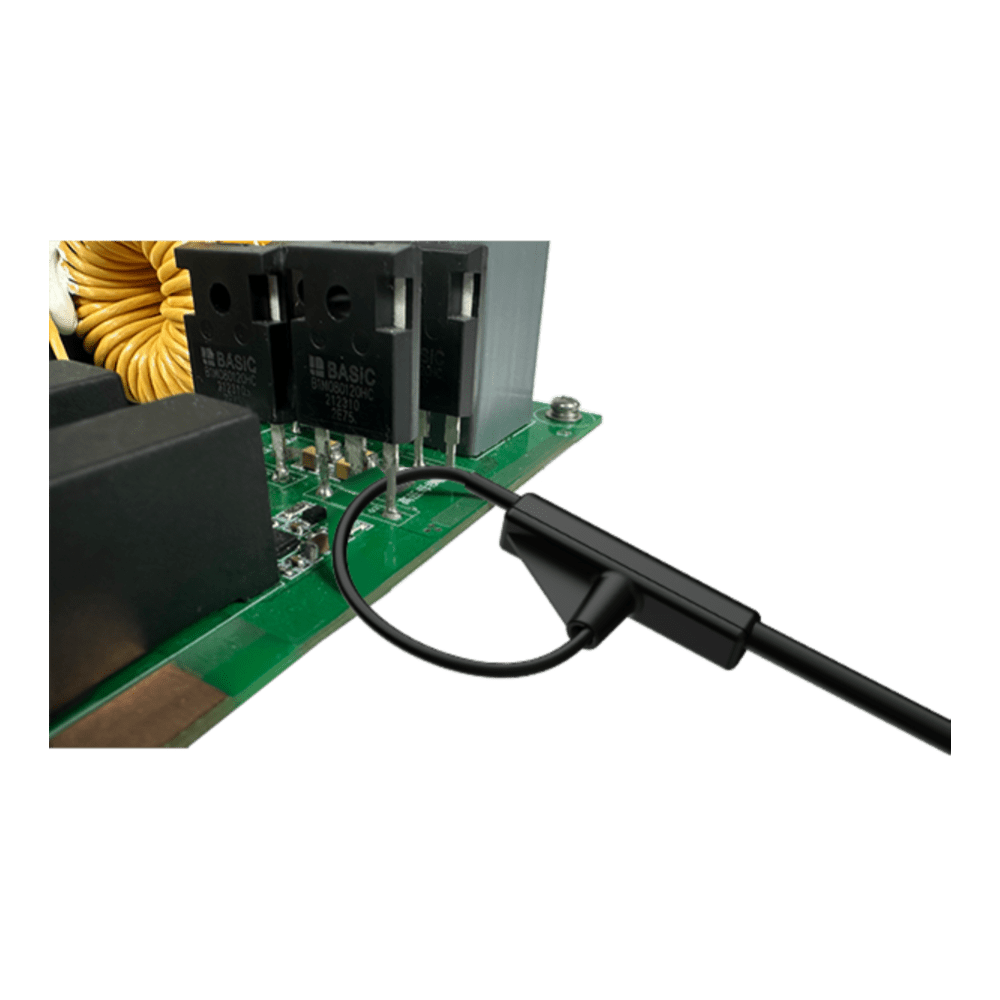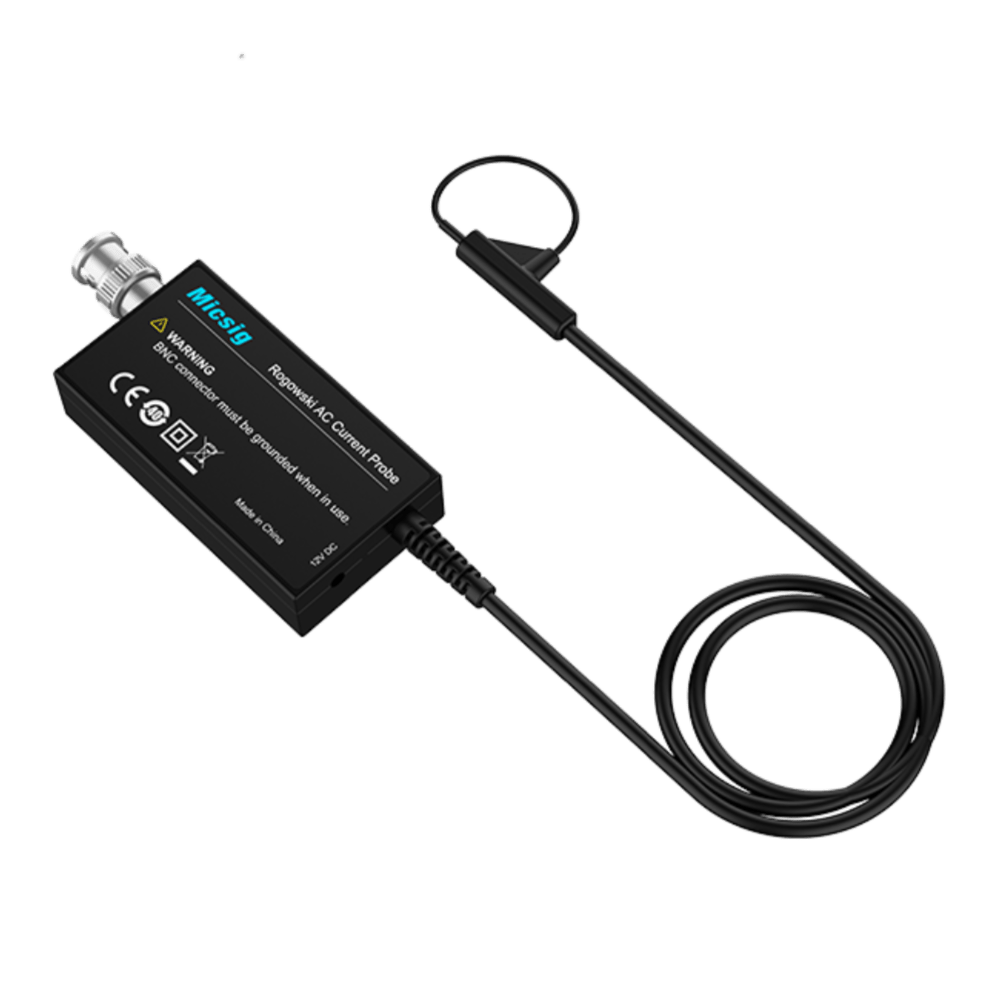
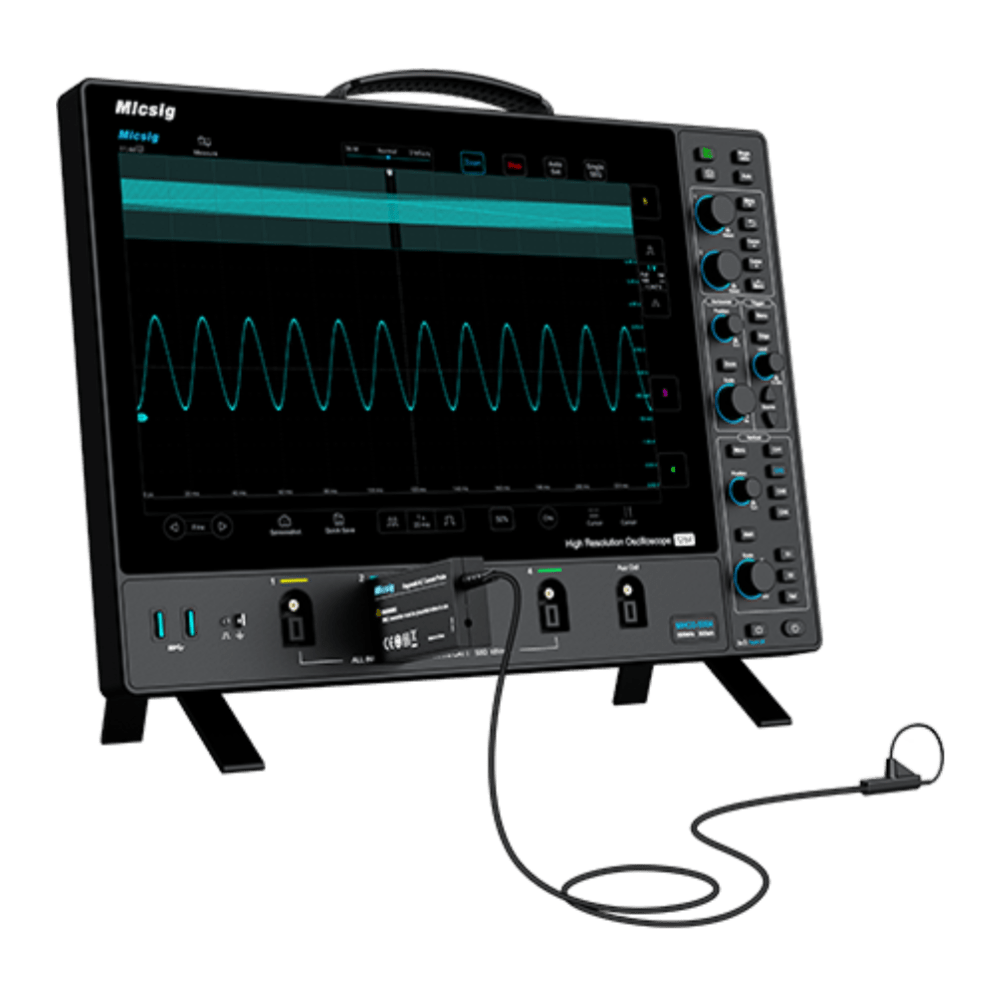
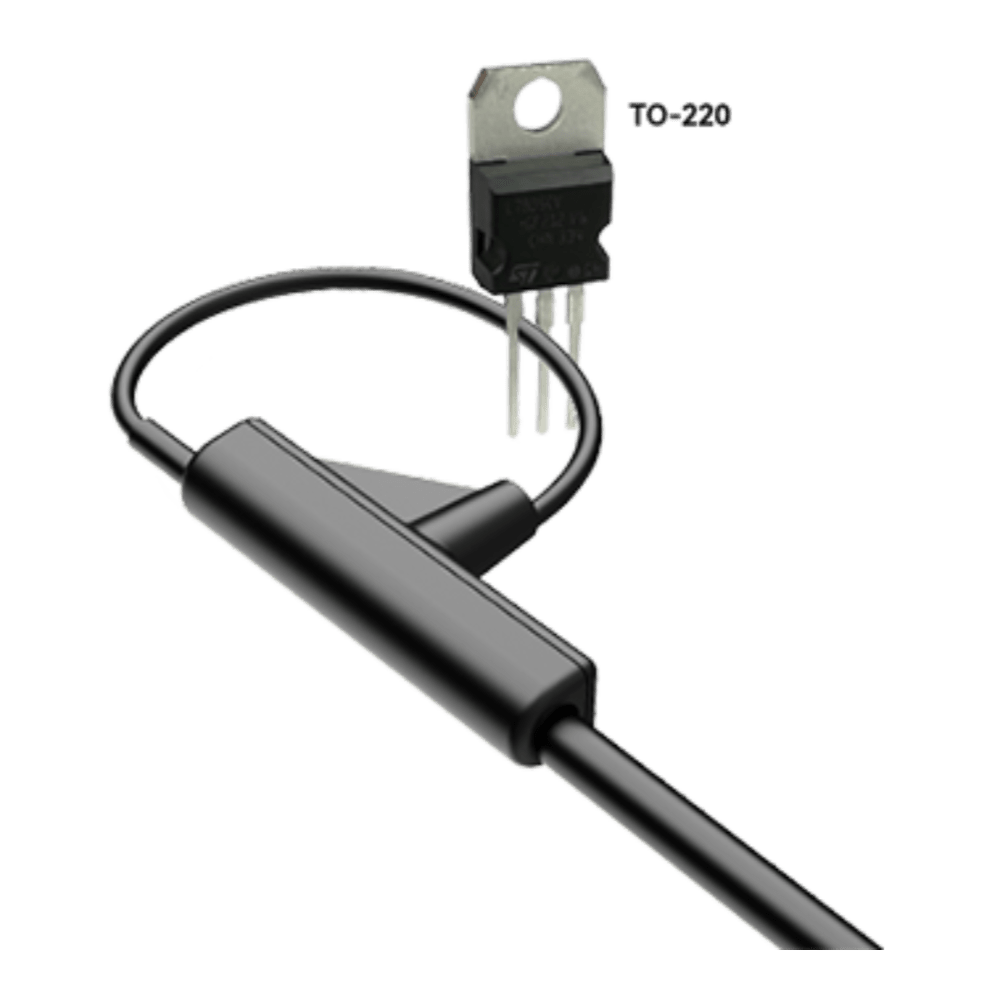

Key Features
Overview
The Micsig RCP-XS series are flexible Rogowski coil probes for measuring AC current waveforms in modern power-electronics systems. With bandwidths up to 30 MHz and peak current capability from 60 A to 12,000 A (model-dependent), they capture fast switching edges, inrush and high-order harmonics without magnetic-core saturation.
A 1.6 mm thin, clip-around coil with a 25 mm inner diameter reaches conductors in tight layouts, including TO-220 device legs. The integrator module provides a linear mV/A output on a standard 1 MΩ BNC interface for use with virtually any oscilloscope. Coil isolation is rated to 1 kVrms (coil section), and the system is powered by a simple 12 V DC supply. The RCP500 variant supports Micsig’s UPI interface and adapter for direct connection to Micsig scopes.
Choose from RCP60XS, RCP120XS, RCP300XS, RCP600XS, RCP1200XS, RCP3000XS, RCP6000XS and RCP12000XS to match current range and bandwidth needs. Typical accuracy is 2% across the series, with low droop and high di/dt handling for double-pulse testing and EMI diagnosis. If you need DC or mixed-signal current, consider pairing with a high-frequency AC/DC probe from the Micsig CP series.
Engineers select RCP-XS for its combination of bandwidth, thin flexible coil, and low insertion impedance—ideal when probing wide-bandgap (SiC/GaN) stages, motor drives and power converters where traditional clamps fall short.
Downloads
Why Engineers Choose The Micsig RCP Series Rogowski AC Current Probe (RCP-XS)
Bandwidth Where It Matters
Access In Tight Spaces
Linear, High-Current Capture
| General Information | |
|---|---|
Part Number (SKU) |
RCP60XS
|
Manufacturer |
Micsig
|
| Physical and Mechanical | |
Weight |
5.0 kg
|
| Other | |
Warranty |
|
HS Code |
|
EAN |
5055383619221
|
Frequently Asked Questions
Have a Question?
-
Typical applications?
Double-pulse testing, inverter/drive validation, inrush capture, harmonic analysis, power-converter optimisation, and general AC current waveform observation.
-
Can it resolve small currents?
Yes within model limits. For example, RCP500 spans ~200 mA to 500 A peak with ~1% typical accuracy. For µA–mA work, consider a high-sensitivity AC/DC probe.
-
What is the coil isolation rating?
The coil section is rated to ~1 kVrms (50/60 Hz, 1 min). Treat the measurement as CAT-rating agnostic and observe safe clearances and instrument CAT ratings.
-
How is it powered and connected?
Standard 1 MΩ BNC output to your scope; 12 V DC supply for the integrator. RCP500 can draw power via Micsig UPI on supported scopes or via adapter.
-
Is there a phase shift or droop to consider?
Yes—like all Rogowski probes, there’s finite droop and delay. RCP-XS specifies low droop (down to ~2%/ms on higher-current models) and ~20–26 ns delay, suitable for double-pulse work.
-
What accuracy should I expect?
Series typical accuracy is ~2% with linear mV/A scaling. The RCP500 variant specifies ~1% typical in its range.
-
How does it compare with premium Rogowski probes?
Versus Tektronix TRCP and PEM CWT families, RCP-XS offers competitive bandwidth and very thin coils, with BNC output and models up to 12 kA. Tek’s TRCP3000 is 1 Hz–16 MHz at 3 kA; RCP-XS retains up to 30 MHz on lower ranges.
-
Which RCP-XS model should I choose?
Match peak current and bandwidth: from RCP60XS (60 A, up to 30 MHz) to RCP12000XS (12 kA, up to 30 MHz). Higher current models trade a lower low-frequency cutoff for range.
-
Can the RCP-XS measure DC?
No—Rogowski probes are AC-only. For DC or mixed AC/DC, use a DC-capable current probe (e.g., Micsig CP series).
-
What is a Rogowski current probe and why use it?
A Rogowski probe is an air-cored coil plus integrator that outputs a voltage proportional to AC current. With no magnetic core, it offers wide bandwidth and excellent linearity for fast waveforms and large currents.



